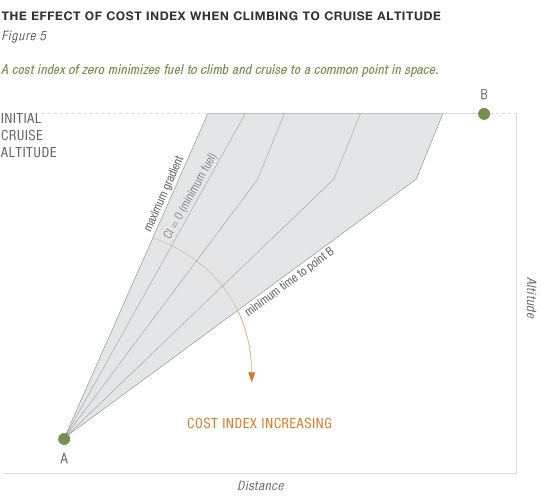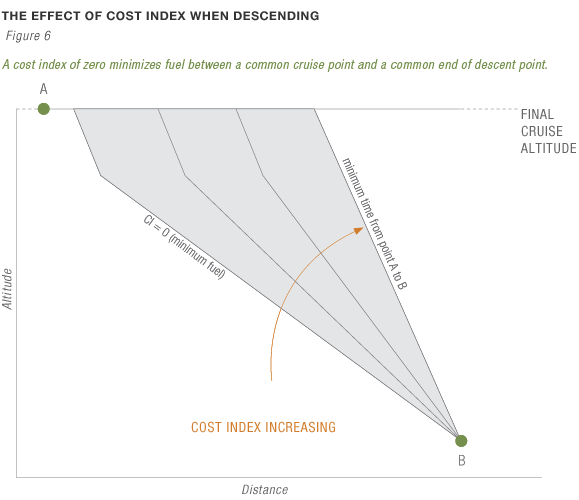
FACTORS AFFECTING COST INDEX
As stated earlier, entering a CI of zero in the FMC and flying that profile would result in a minimum fuel flight and entering a maximum CI in the FMC and flying that profile would result in a minimum time flight. However, in practice, the CI used by an operator for a particular flight falls within these two extremes. Factors affecting the CI include time-related direct operating costs and fuel costs.
TIME COST
The numerator of the CI is often called time-related direct operating cost (minus the cost of fuel). Items such as flight crew wages can have an hourly cost associated with them, or they may be a fixed cost and have no variation with flying time. Engines, auxiliary power units, and airplanes can be leased by the hour or owned, and maintenance costs can be accounted for on airplanes by the hour, by the calendar, or by cycles. As a result, each of these items may have a direct hourly cost or a fixed cost over a calendar period with limited or no correlation to flying time.
In the case of high direct time costs, the airline may choose to use a larger CI to minimize time and thus cost. In the case where most costs are fixed, the CI is potentially very low because the airline is primarily trying to minimize fuel cost. Pilots can easily understand minimizing fuel consumption, but it is more difficult to understand minimizing cost when something other than fuel dominates.
FUEL COST
The cost of fuel is the denominator of the CI ratio. Although this seems straightforward, issues such as highly variable fuel prices among the operating locations, fuel tankering, and fuel hedging can make this calculation complicated.
A recent evaluation at an airline yielded some very interesting results, some of which are summarized in Figure 4 (see previous page). A rigorous study was made of the optimal CI for the 737 and MD-80 fleets for this particular operator. The optimal CI was determined to be 12 for all 737 models, and 22 for the MD-80.
The table (see fig. 4, on previous page) shows the impact on trip time and potential savings over the course of a year of changing the CI for a typical 1,000-mile trip. The potential annual savings to the airline of changing the CI is between US$4 million and $5 million a year with a negligible effect on schedule.


SUMMARY
CI can be an extremely useful way to manage operating costs. Because CI is a function of both fuel and nonfuel costs, it is important to use it appropriately to gain the greatest benefit. Appropriate use varies with each airline, and perhaps for each flight. Boeing Flight Operations Engineering assists airlines' flight operations departments in computing an accurate CI that will enable them to minimize costs on their routes. For more information, please contact FlightOps.Engineering@boeing.com.
